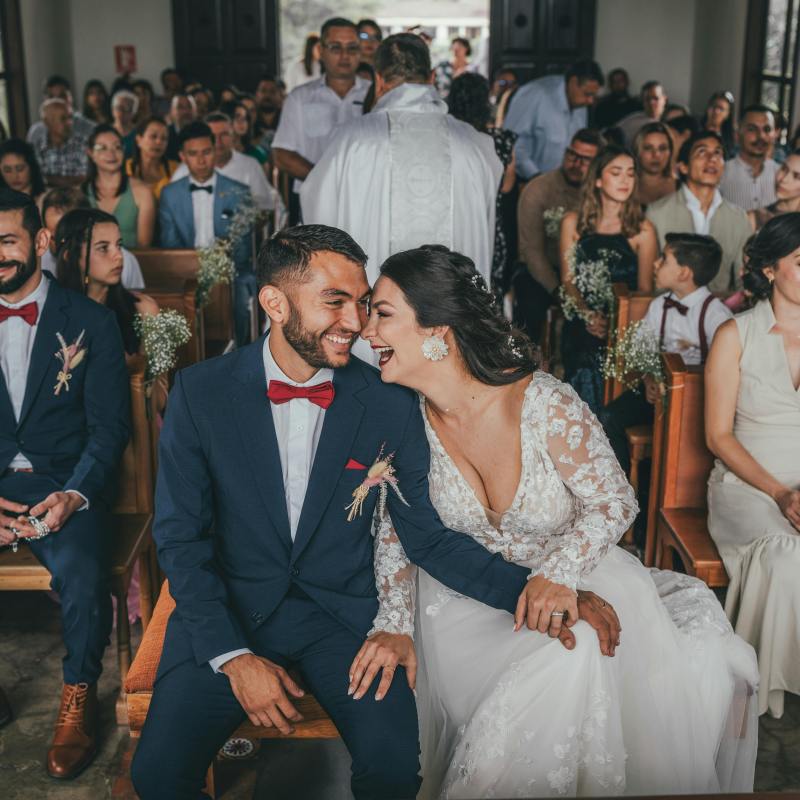
If you’ve had the pleasure of attending a wedding in another country, you were probably pretty intrigued.
Videos by TravelAwaits
For the most part, weddings are the same around the world. They’re designed to bond two individuals together for a lifetime, while also bridging any gaps between their two families.
But how that happens changes depending on where you’re from.
Usually, wedding planning is influenced heavily by factors like religion, language, and other cultural influences.
For example, I was raised in the Catholic Church… which has a pretty elaborate marriage process. The ceremony takes a few hours and involves plenty of kneeling—even for the bride in her white dress.
A Hindu wedding, on the other hand, also involves ceremonies, rituals, and gatherings that can stretch on for weeks. There are activities like elaborate mehndi painting and hours-long ladies-only dancing sessions like the sangeet.
Catholic weddings and Hindu ceremonies aside, our world is full of beautiful wedding traditions. Let’s explore how people around the world celebrate love eternal.
Jumping the broom in the United States
That’s right—you don’t need to wander far to learn about unique marriage traditions.
In the United States, jumping the broom takes place at Black weddings to celebrate and legitimize marriages. This tradition began back in the 1700s when the Atlantic slave trade was still active.
Some researchers believe the tradition might have begun with Welsh, Irish, and Romani communities. However, it didn’t come back into the public purview until Alex Haley’s Roots was published in the 1970s. Since then, it’s been part of Black culture in the United States.
Kissing the bride or groom in Sweden
Who says all wedding traditions need to be austere?
If you’re heading to a Swedish wedding, then you might notice something weird happening whenever the bride or groom leaves the room. Wedding guests will take the opportunity to steal a kiss from the bride or groom.
It’s regarded as a playful exchange. But I’m glad I learned about this before attending a Swedish wedding because I would have been gasping like Wendy Williams if I had seen this live.
Heckling in Nigeria
What if I told you that it was someone’s job at a Nigerian wedding to tease the groom and his friends throughout the wedding?
That’s right—this cheeky MC rule is known as the ‘alaga’. Usually, it’s a woman who takes on the job.
And it’s a hefty one. Along with providing well-placed heckles designed to entertain guests, the alaga will also dance, tell stories, sing, and other curry laughter. I saw one description of the alaga as providing a ‘theatrical’ element to the whole ceremony—which seems like a fantastic description.
Pinning money to the bride in Cuba
It’s not unusual for wedding guests to ask the bride for a dance during the reception.
In Cuba, you might notice something a little strange taking place. When male guests dance with the bride, they’ll often pin a small amount of money to her dress.
Usually, the amount is small and symbolic. However, the funds are used to contribute to the new couple’s honeymoon and wedding expenses.
Drinking from the Quaich in Scotland
In Scotland, one of the most enduring wedding traditions is a ceremony that involves toasting with the quaich.
A quaich is a double-handled chalice that’s also known as the Cup of Love in Scotland. That’s because newlyweds share a toast from a quaich with their families to establish their bond in a small and private meeting.
Admiring the Sofreh table in Iran
Persian weddings put a great focus on personal meaning and symbolism.
This is beautifully exemplified with the ‘sofreh agh’, a ceremonial table in which important items are displayed. Traditionally, the table includes candles, mirrors, nuts and eggs, and coins, which symbolize things like fertility, eternity, and prosperity.
But more generally, the sofreh is designed to represent the new couple as a united pair. It lays out a journey of their life so far, as well as the journey that lies before them.
This has to be one of my favorite traditions I’ve learned about—it’s elegant, poetic, and deeply meaningful for the couple.
Eating at the Paebaek table in South Korea
Speaking of ceremonial tables, South Korean weddings usually feature a ‘paebaek’ ritual.
This involves a small tea ceremony that the bride and groom enjoy with their immediate family (or in front of all their wedding guests, depending on their tastes).
The couple usually pours tea for their parents, who then bless their union. At the very end, parents toss dates and chestnuts for the couple to catch in a ceremonial white cloth. The total reflects the number of children they’ll have.
